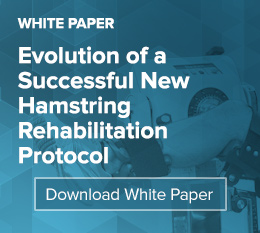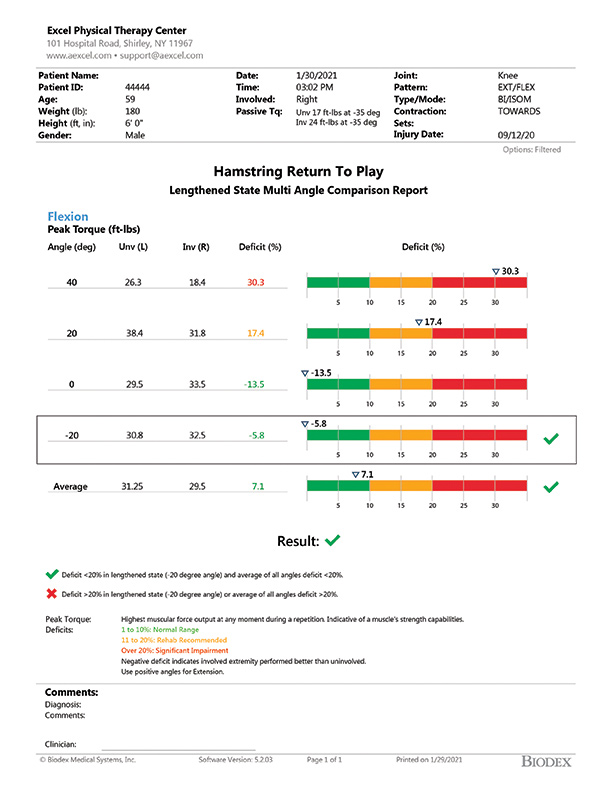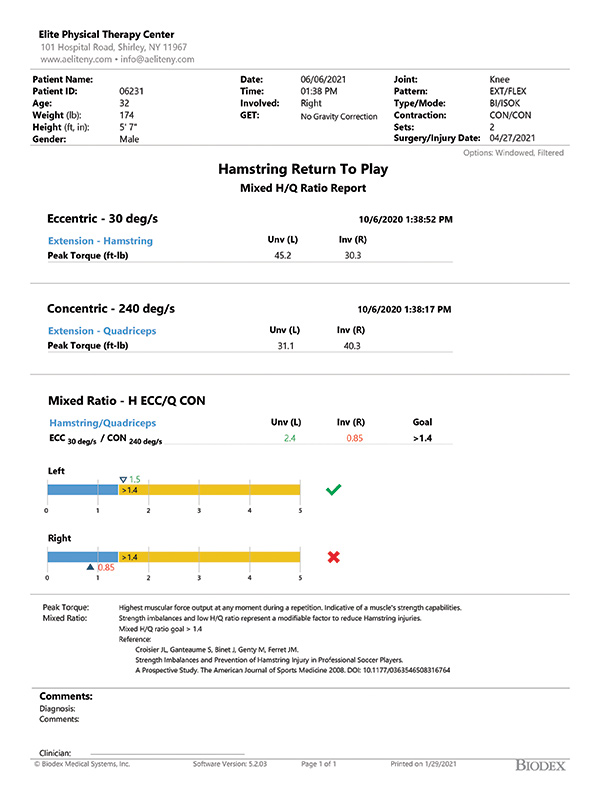- Physical Medicine Home
- Products
- Programs
- Applications
- Find a Clinic
- Blog
- Events
- Education & Training
- In The News
- Press Releases
System 4 Pro™
< back to product overviewSPORTS MEDICINE SOLUTIONS Hamstrings
Hamstrings
High incidence rate, slow healing, persistent symptoms, and a historically high rate of recurrence have made hamstring injuries a challenge for both athletes and the clinical team responsible for their recovery.
There is mounting evidence that the risk of re-injury can be minimized by using rehabilitation strategies that incorporate neuromuscular control exercises and eccentric strength training, combined with objective measures to assess recovery and readiness to return to sport.1
System 4 Supports Hamstring Protocols
Regardless of whether you have an existing process for protecting and strengthening hamstrings, the objective test protocols offered with the Biodex™ System 4 will provide valuable, isolated muscle-performance data. Test results, combined with established targeted outcomes, can be used for pre-emptive injury screening, managing rehabilitation and determining readiness for returning to play.
NEW Return-to-Play Reports
Biodex introduces the first Return-to-Play report for hamstring injury, now available with System 4 Advantage BX™ software:
- Shows clear pass/fail test results
- Grounded in the latest research
- Simplifies communication with athletes, physicians and third-party payers
- Supports two commonly used hamstring rehab protocols:
- Lengthened State - Multiple Angle Comparison
- Mixed H/Q Ratio
Upgrade path available for existing System 4 and System 3 (rev. 2) dynamometers.
Protocol #1:Lengthened State - Multiple Angle Comparison Test Examines isometric bilateral flexion peak torque symmetry where the limb position puts the hamstring in a lengthened (stretched) state. Passive stretch is the inherent force (or torque) produced by the hamstring in the lengthened state. When deficits are within 10%, predisposition to reinjury is significantly reduced. NOTE: This Protocol requires 830-550 Hamstring Attachment. Use of any attachment other than the 830-550, is outside proper and intended use. |
|
||||||
|
|||||||
Protocol #2:Mixed H/Q Ratio Test Uses a ratio of eccentric and concentric flexion peak torque where, if the ratio exceeds 1.4, hamstring injury is greatly diminished. NOTE: This Protocol utilizes the standard Biodex Knee Attachment.
|
|
 |
 |
|
References: |
Primary Resources
Additional Documentation
Support
What They Are Saying
Northern Virginia Community College
Lab Instructor and Manager of the PTA Program
Dori Hildreth-Fischer
“In our PTA program, the students are given a very general introduction to the Biodex Multi-Joint System.”
... read more >








